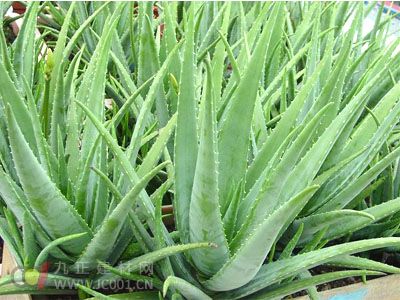What is aloe vera
Aloe (scientific name: Aloe) is known as aloe vera. It is native to the Mediterranean Sea and Africa. It is a perennial herb of the genus Salicaceae. According to the research, there are more than 300 species of wild aloe vera, mainly distributed in Africa and other places. This kind of plant is popular among the public, mainly because it is easy to plant and is an ornamental plant with both flowers and leaves. There are only six edible varieties, and the most valuable aloe varieties are: Aloe Vera (also known as Barbados Aloe Vera or Aloe Vera) Aloe Vera (distributed in northern Africa, West Indies), Cape Aloe Vera ( Distributed in southern Africa), Yuanjiang aloe and so on.
Aloe species:
Chinese aloe vera nickname: Chinese aloe vera, characterized by broad leaves and spots on light green leaves.

Japanese aloe vera: Aloe vera, the leaves are small and dark green.
American aloe nickname: American Aloe vera, characterized by a wide leaf and mostly juice dark green.
African aloe nickname: Cape Aloe Vera leaves are small and wide.
Morphological characteristics:
Evergreen, fleshy herb. Leaves clustered, seated or borne on top of stalks, often often lanceolate or shortly lanceolate, lanceolate. Inflorescences are umbrella-shaped, racemous, spike-like, conical, etc., the color is red, yellow or red spots, six petals and six pistils. The base of the perianth is more integrated into a tube. There are at least 300 species of aloe vera, of which there are about 250 species in the African continent, about 40 species in Madagascar, and the remaining 10 species in the Arab region. The nature and shape of various varieties of Aloe are very different, such as huge trees, up to 20 meters, some heights are less than 10 centimeters, and the shape of leaves and flowers are also many kinds. The cultivation has its own characteristics, and it is in various poses. Love. Aloe vera is a tropical plant that is chilling but also good for life.
Growth habits:
Soil: Aloe vera prefers to grow in loose soil with good drainage performance and difficult to form. Generally, some gravel ash can be mixed in the soil, and it is better to add turf grass ash, etc. Drainage and poor permeability of the soil will cause roots to be blocked, rot and necrosis, but too much sandy soil often causes loss of water and nutrients, making aloe vera poor growth.
Temperature: Aloe vera is cold, and it grows in a frost-free environment all year round. Growth stops at about 5 ° C. At 0 ° C, there is an obstacle in the life process. If it is lower than 0 ° C, it will be frostbitten. The most suitable temperature for growth is 15-35 ° C and the humidity is 45-85%.
Water: Like all plants, aloe vera also needs water, but it is most afraid of water. In the rainy and humid season or poor drainage, the leaves are atrophy, the roots rot and even die.
Sunshine: Aloe vera needs sufficient sunlight to grow. It should be noted that the first planted aloe vera is not suitable for sun exposure. It is best to see the sun only in the morning. After ten days and a half, it will slowly adapt to the sun. growing up healthily.
Fertilizer: Fertilizer is indispensable for any plant. Aloe vera requires not only NPK but also some trace elements. In order to ensure that aloe vera is a green natural plant, it is necessary to use fermented organic fertilizer, cake fertilizer, chicken manure, compost, and manure fertilizer is more suitable for planting aloe vera.
Reproduction: Aloe vera is generally vegetatively propagated by techniques such as seedling transplanting or cutting. Asexual reproduction speed is fast, and it can stably maintain the excellent characteristics of the variety.
Multi Purpose Mats,Non-Woolen Mats,Waterproof Multi Purpose Mats,Custom Multi Purpose Mats
Suzhou Surface Protective New Material Technology Co.,Ltd , https://www.surfaceprotective.com